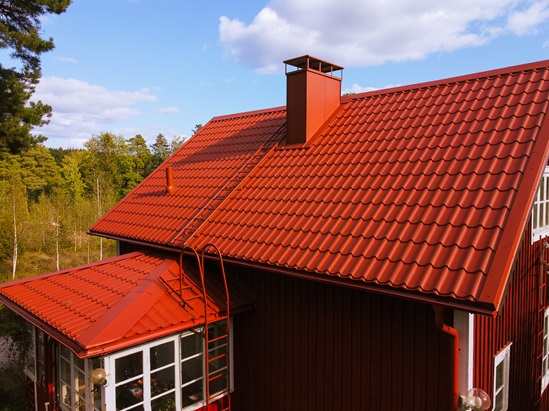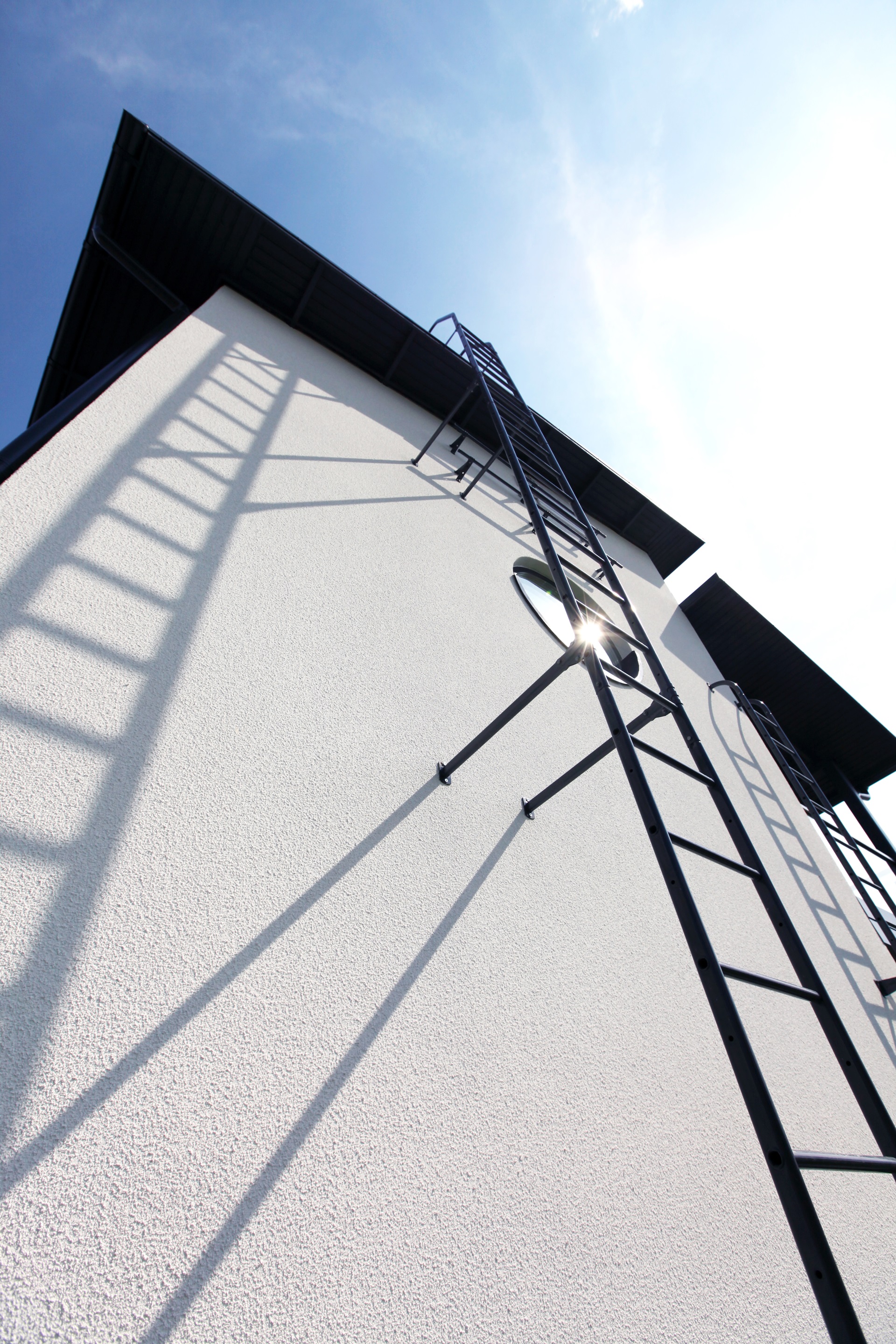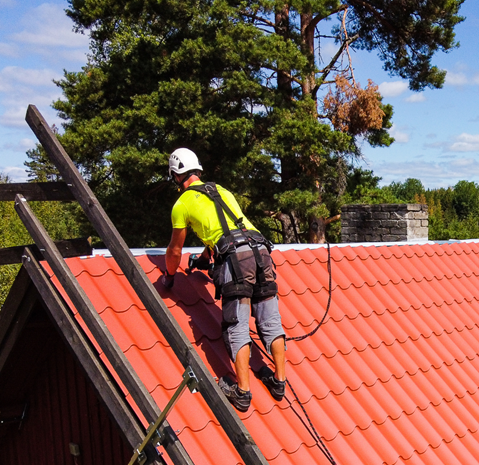Safety related to roofs can be divided into two areas. The first of these covers the construction stage while the other encompasses the entire service life of the house during its use.
Roof safety is a part of occupational safety
At the construction stage, roof safety is a part of occupational safety, covering the safe installation of the roofing, rainwater systems and roof safety products. In many countries, occupational safety regulations are provided for in laws, and they also typically vary between countries. For example, in Finland installing a roof from a ladder is not permitted because it involves an increased risk of falling, compared with the use of scaffolding.
The way people behave has a huge impact on the occurrence of accidents. According to estimates, 80-90 per cent of all accidents are caused by non-compliance with regulations. Tripping over, sprains and cuts are the most typical accidents that occur at the construction stage, and they often take place because the worksite is not kept tidy and safety regulations are not adhered to. Falling off the roof is the most serious accident that can occur at the construction stage.
In snowy climates, construction stage accidents typically happen in spring, when snow has just melted off the roof. Workers may then easily feel a false sense of security when moving on the roof, which increases the probability of an accident. Another time when accidents are more likely is the period after holidays when people have yet to get back into safety routines.
While local laws dictate the safety measures in installation work, the employer is also obliged to prepare a safety plan for the worksite.
On Ruukki’s roof installation sites, safety always comes first. Safety measures are based on an occupational safety plan, which is supported by training and safety meetings arranged at regular intervals. At these meetings, safety matters are discussed within teams. Ruukki requires employees working on its worksites to use personal protective equipment that exceeds the minimum safety requirements. Inspections are carried out at regular intervals on worksites.
Safety on a completed roof
Whether working and moving on a roof takes place safely depends on each worker’s conduct and understanding of safety principles. Safety requirements for a completed house are governed by building laws. A building must be safe to use and maintain throughout its life cycle and this is particularly important in the areas of the building where accidents are more likely, such as the roof.
Measures that promote safety include roof safety products, such as roof walkways, ladders and fall-protection systems. Often, safety during the use may be given less attention than safety at the construction stage. This is typically the case if cost considerations, rather than safety aspects, drive decision-making.
Why does the roof need to be entered and who works on the roof? Chimney sweeps and cleaners are the professionals that most commonly work on roofs. On the basis of data collected by Statistics Finland from chimney sweeps and building cleaners, the most common reasons for accidents in work that takes place on roofs were related to access routes and ladders. In 2020, more than a third of the accidents took place on a walkway or a fixed ladder, and typically the accidents involved a hard impact due to falling, for example. More than half of the injuries were to hands and feet. The statistical material shows that the best way to promote roof safety is to prevent falls from walkways and to have appropriate access routes to and from the roof.
The safety of the building’s residents can also be improved with technical measures, such as safety devices installed on the roof. Such devices include safety wire systems that prevent falls, anti-slip ladders and snow guards. In snowy regions, correctly dimensioned snow guards that extend across the entire roof can prevent snow and ice from falling on passersby.
Ruukki offers comprehensive roofing packages to its customers. These include roof safety systems, in addition to the roofing materials and rainwater systems. Ladders, roof walkways and for example the SafeLine fall-protection system bring added safety to both residents and anyone working on the roof.
Human behaviour plays a main role in safety, particularly risk-prone behaviour, but accidents resulting from such conduct can be prevented with appropriate roof safety products and compliance with instructions.





.tmb-250x190.jpg?sfvrsn=607438b5_1)











